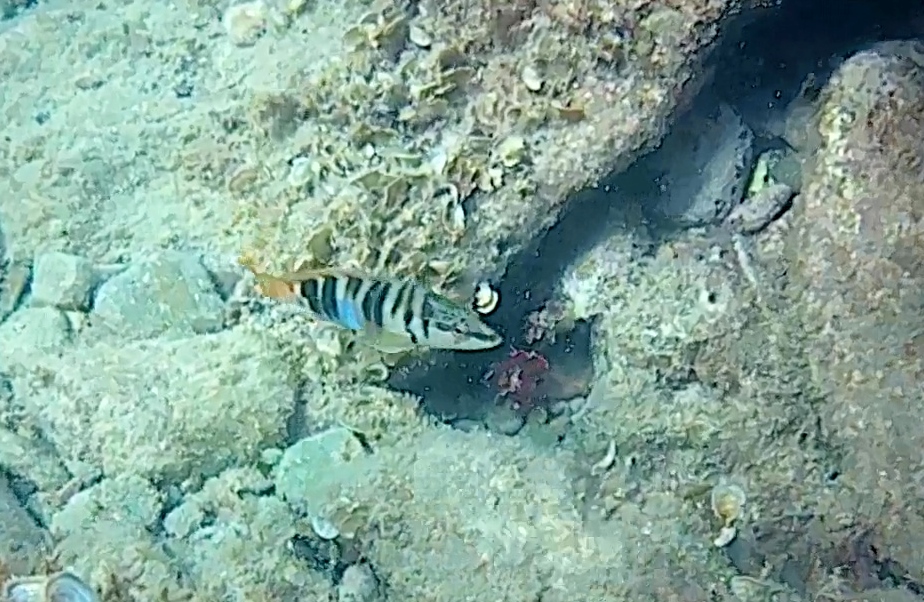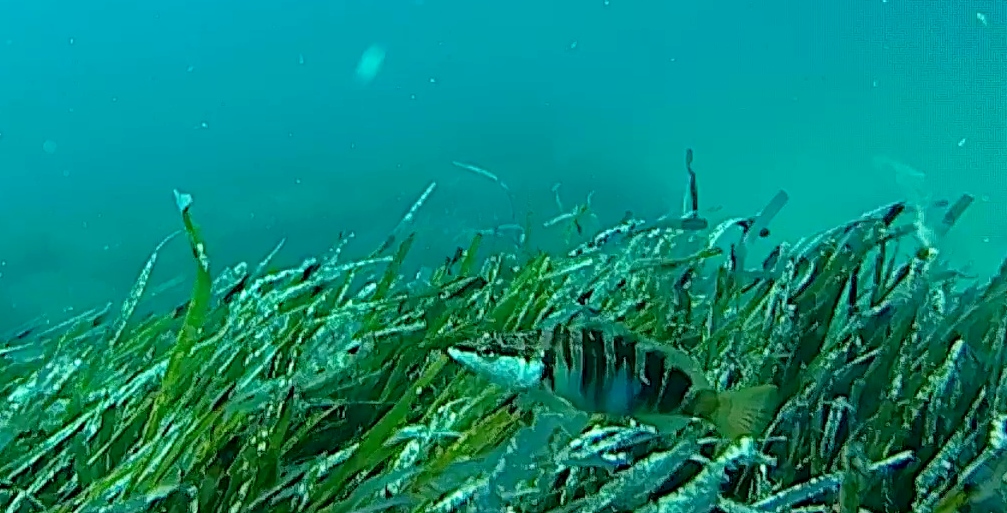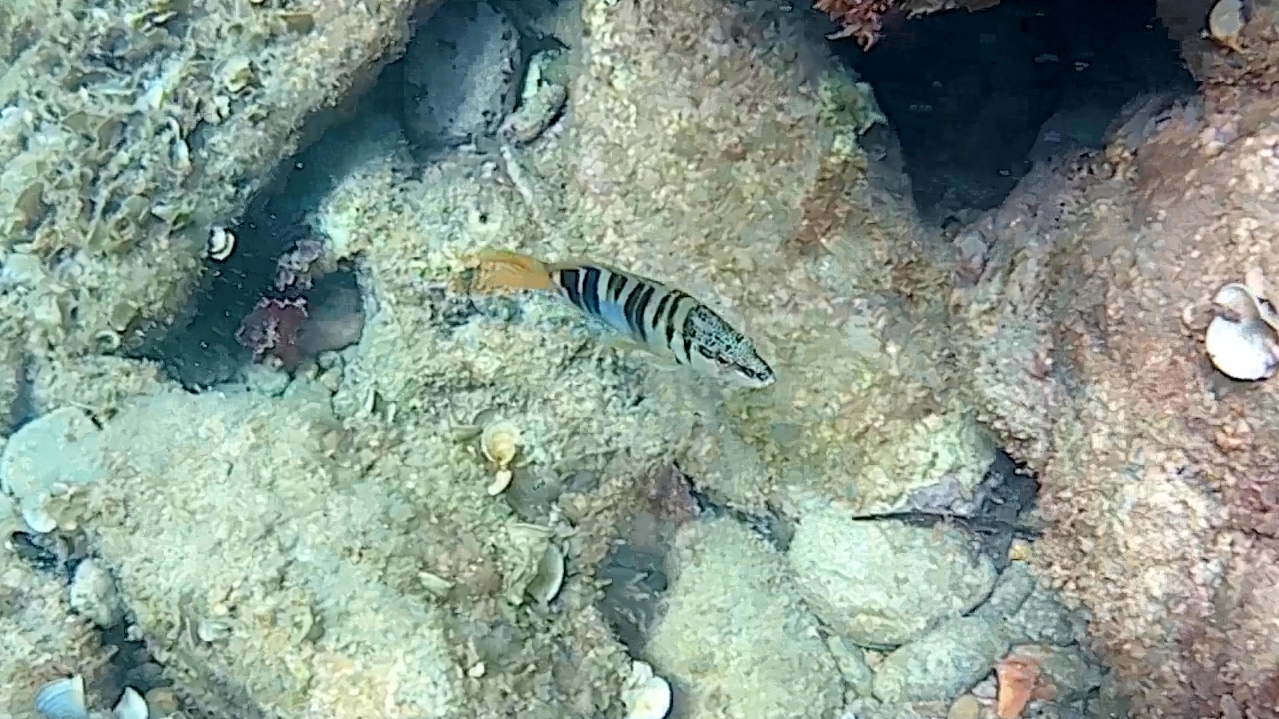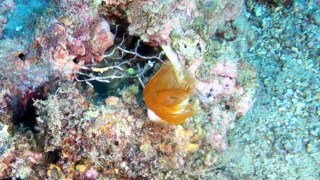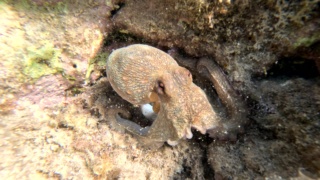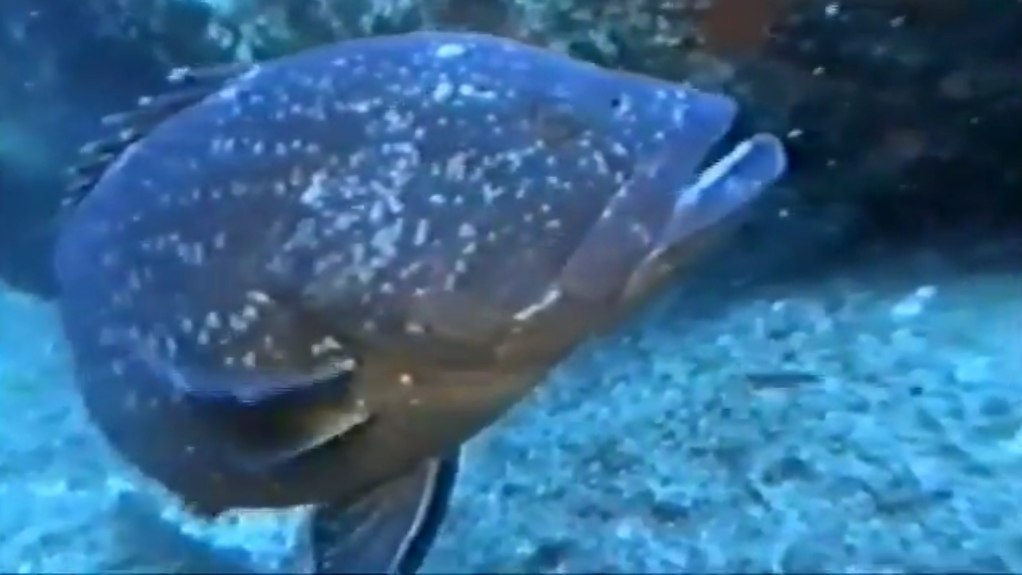The Painted Comber (Serranus scriba) is a subtropical marine fish, classified in family Serranidae, the groupers and sea basses. It is found in the eastern Atlantic Ocean, the Mediterranean Sea, and the Black Sea.
Serranus scriba grows to a length of 28 centimetres. This grouper has a squat body, a large head and a mouth very large in proportion to the body size. Jaws are filled with sharp teeth. The painted comber is orange to red in color with bluish to dark brown vertical stripes that are wider and darker towards the tail. The caudal fin is dark yellow to orange, the dorsal fins are yellow with orange dots and lines. The pelvic fins and pectoral fins are usually monochromatic light yellow. The head shows many reddish-brown lines that resemble Arabic writing (hence the Latin name of the species). On both sides of the abdomen there is a large, bright blue area.
Many serranid species are brightly colored, and many of the larger species are caught commercially for food. They are usually found over reefs, in tropical to subtropical waters along the coasts. Serranids are generally robust in form, with large mouths and small spines on the gill coverings. They typically have several rows of sharp teeth, usually with a pair of particularly large,canine-like teeth projecting from the lower jaw.
All serranids are carnivorous. Although some species, especially in the Anthiadinae subfamily, only feed on zooplankton, the majority feed on fish and crustaceans. They are typically ambush predators, hiding in cover on the reef and darting out to grab passing prey. Their bright colours are most likely a form of disruptive camouflage, similar to the stripes of a tiger.
Many species are protogynous hermaphrodites, meaning they start out as females and change sex to male later in life. They produce large quantities of eggs and their larvae are planktonic, generally at the mercy of ocean currents until they are ready to settle into adult populations.
Typically groupers live in their lair, where they feel safe, and go out to get food and check the territory.
(extract from Wikipedia)
 English
English Italiano
Italiano
